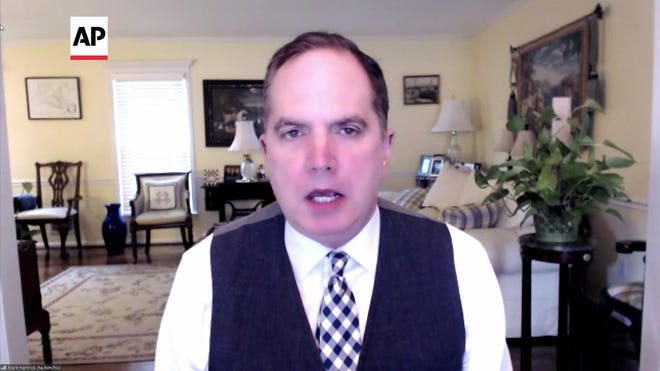Hurricane Ida doesn’t fully explain why Louisiana lost 30,000 jobs

[ad_1]
Preliminary state employment data for September shows a loss of nearly 30,000 seasonally adjusted non-farm jobs from August, and although this is in part due to the impacts of Hurricane Ida, the storm ignores the overall change in employment.
Louisiana’s September figures detail much of the job losses in the New Orleans metropolitan statistical area, but there are losses in other parts of the state that have not suffered any damage due hurricanes, according to Patrick Scott, assistant professor of economics and director at Louisiana Tech University. for the Center for Economic Research.
“Something bigger than Hurricane Ida”
“Obviously it’s something bigger than Hurricane Ida,†Scott said. “Now, every time New Orleans sniffs, the state cools off, and it’s traditional in employment – it’s such a big MSA… But there are more job losses.”

Hurricane Ida made landfall as a Category 4 storm on August 29, the 16th anniversary of Hurricane Katrina. While southeastern Louisiana was hit hard by Hurricane Ida, northern towns like Shreveport were spared torrential rains and wind. Nonetheless, all metropolitan areas except three – Alexandria, Monroe and Lake Charles – lost jobs from August through September. Shreveport lost 1,000 jobs, Lafayette lost 1,600 jobs and Houma lost 3,800 jobs. Employment in New Orleans fell the most with a loss of 22,700 jobs.
About 41,000 people filed for unemployment from Aug. 29 through September, according to the Louisiana Workforce Commission. Throughout August and September, continuous weekly jobless claims for the state hovered between about 30,000 and 41,000.
Scott said the losses took place against a larger backdrop of economic stagnation. According to the Louisiana Economic Abstract 2021, an annual report from the Center for Economic Research, the state has lost about 144,000 jobs from pre-pandemic levels. In addition, these losses are partly due to the fact that around 81,000 people completely leave the labor market and no longer choose to look for a job. Possible reasons for leaving the workforce include feelings of discouragement, retirement and lack of incentives to return to work, Scott said.
Following:Southeast Louisiana jobless claims spike again after Hurricane Ida
“Until we re-engage that part of the workforce, we’re not going to make a full recovery,†Scott said. “That’s the key. If we’re going to formulate a policy, this is where we need to start targeting our policy.”

The decrease in labor force participation has contributed to the decline in the unemployment rate, which is calculated by dividing the number of unemployed by the size of the labor force and multiplying that quotient by 100. Louisiana was one of the 27 states to experience an unemployment rate drop of 5.8%, down 0.4 points from August and 2.2 points from a year ago. Scott said it’s because the denominator of the fraction changes, not because more unemployed people find work.
Stagnation can also be observed at the local level. Most of the Metropolitan Statistical Areas, or MSAs, except Houma and New Orleans, gained jobs from September 2020 through September 2021. However, the MSAs that continue to see job growth are Lafayette , Hammond and Alexandria. The rest is shrinking.
Scott said Alexandria is the closest to job recovery, but that could be because MSA is small and has fewer jobs to pick up. According to the Louisiana Economic Abstract 2021, Baton Rouge, Lake Charles, Monroe and Shreveport have “struggled†to recoup half of their job losses.
Long-lasting effects
Scott said Hurricane Ida has wreaked havoc in the lives of many people and continues to have lasting effects, but said the storm which is more like the level of impact COVID-19 has had on it. The state’s economy is Hurricane Katrina. The economic recovery from COVID is expected to mimic Katrina’s past trend, which means improvements will be anything but rapid.

The LWC reported that the leisure and hospitality industry had the largest year-over-year gain for seasonally adjusted jobs at 12,500. Scott said it should work well for the New Orleans area.
The recovery also depends on the pandemic recovery, Scott said. He said people have reached a state of complacency with COVID, and those who have wanted to get vaccinated have already done so.
“Until more people are vaccinated, this virus is going to continue to mutate; it’s still going to pose a threat even to the effectiveness of the vaccine that we’re already seeing, and that’s a problem too,” Scott said. “We are in a very slow recovery.”
Follow Sabrina LeBoeuf on Twitter @_sabrinakaye and on Facebook at https://bit.ly/3B8sgHo.
Support local journalism by subscribing to https://cm.thenewsstar.com/specialoffer.
[ad_2]
